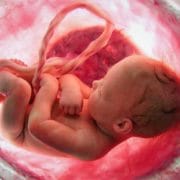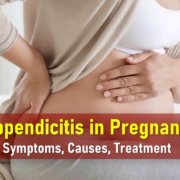Miscarriage: Symptoms, Causes, Risks, Treatment & Prevention
Experiencing a miscarriage can be an emotionally and physically challenging time. If you suspect you are having a miscarriage, it is crucial to seek medical advice as soon as possible. Vaginal bleeding is often the first sign, followed by cramping or abdominal pain. However, not all bleeding during pregnancy leads to a miscarriage, so consulting a healthcare professional is essential for proper guidance. Depending on the stage of pregnancy, you may pass blood clots, tissue, or even notice the form of a small baby. While nothing can prevent a miscarriage once it begins, medical support can help manage the process safely.
What Is a Miscarriage?
A miscarriage is defined as the loss of a pregnancy before 20 weeks of gestation. It occurs when a pregnancy stops developing, and the tissue eventually passes out of the body. Common symptoms include cramping, period-like pain, and vaginal bleeding.
Most miscarriages (75 to 80 percent) occur within the first 12 weeks of pregnancy. It’s estimated that 1 in 4 pregnancies end in miscarriage, though many go unreported or unrecognized because they happen very early in the pregnancy.
Types of Miscarriage
Miscarriage can happen in different ways, and your doctor may identify the type you have experienced. Other forms of pregnancy loss include ectopic pregnancy, molar pregnancy, and blighted ovum. Below are the common types of miscarriage:
- Threatened Miscarriage: A threatened miscarriage occurs when you experience symptoms such as light vaginal bleeding and lower abdominal pain, but the cervix remains closed. This may persist for days or weeks. In some cases, the symptoms resolve, and the pregnancy continues, while in others, it leads to miscarriage.
- Inevitable Miscarriage: An inevitable miscarriage means that the pregnancy loss has already started. Symptoms include vaginal bleeding and strong lower abdominal cramps. The cervix opens, and pregnancy tissue begins to pass from the uterus.
- Complete Miscarriage: A complete miscarriage occurs when all pregnancy tissue has been expelled from the uterus. Intense cramping, similar to period pain, often accompanies the process. Vaginal bleeding may continue for a few days but should gradually decrease. A check-up is recommended to ensure the miscarriage is complete and to prevent infection.
- Incomplete Miscarriage: In an incomplete miscarriage, some pregnancy tissue remains in the uterus while some have passed. Symptoms may include ongoing vaginal bleeding and abdominal cramping. Medical treatment or surgical intervention (such as dilation and curettage) may be necessary to remove the remaining tissue and prevent infection.
- Missed Miscarriage: A missed miscarriage occurs when the pregnancy stops developing, but there are no immediate symptoms. Many people only discover this during a routine scan. Symptoms of pregnancy, such as nausea and fatigue, may have decreased, but there may be no noticeable bleeding or cramping.
- Recurrent Miscarriage: Recurrent miscarriage is defined as three or more consecutive pregnancy losses. If you have experienced multiple miscarriages, consulting a doctor is recommended to explore possible underlying causes and potential treatment options.
How Common is Miscarriage?
Miscarriage, defined as the spontaneous loss of a pregnancy before the 20th week, is a common occurrence worldwide. Globally, an estimated 23 million miscarriages happen each year, equating to approximately 44 pregnancy losses every minute. This accounts for about 15% of all recognized pregnancies.
In the United States, data suggests that women experience an average of 0.5 miscarriages or stillbirths over their reproductive lifetimes. Many miscarriages occur before a person is even aware of their pregnancy, making the exact prevalence difficult to determine.
Who is at Risk of Miscarriage?
Several factors can increase the risk of miscarriage, including age, pre-existing health conditions, lifestyle choices, and genetic abnormalities. Below are the key risk factors:
- Age: The risk of miscarriage increases with maternal age. At 35 years old, the risk is around 20%. By 40, it rises to approximately 33%. By 45, the risk can be between 57% and 80%.
- Previous Miscarriages: Individuals who have experienced one or more miscarriages are at a higher risk of future pregnancy loss.
- Chronic Health Conditions: Medical conditions such as uncontrolled diabetes, thyroid disorders, and autoimmune diseases (such as lupus) can increase the likelihood of miscarriage.
- Lifestyle Factors: Smoking, excessive alcohol consumption, and drug use are all linked to a higher risk of miscarriage. Additionally, consuming high levels of caffeine—more than 500 mg per day (about three to five cups of coffee)—may also contribute to pregnancy loss.
- Obesity: Being obese has been linked to an increased risk of miscarriage due to hormonal imbalances and other health complications.
Although the risk factors above contribute to pregnancy loss, many miscarriages happen due to chromosomal abnormalities that cannot be prevented. If you have concerns about your pregnancy, consult with your healthcare provider for personalized advice and support.
Causes of Miscarriage
Miscarriages often happen because the pregnancy is not developing as expected. The process of creating new life is incredibly complex—each pregnancy begins with the combination of genetic material from the egg and sperm. If an error occurs during this process, the embryo may not form correctly, leading to a miscarriage.
One of the most common causes of miscarriage is chromosomal abnormalities. These occur when the baby receives too many or too few chromosomes, preventing normal development. Such abnormalities are more likely as maternal age increases, which is why miscarriage rates are higher in women over 35.
Another possible cause is implantation failure, where the fertilized egg does not properly attach to the uterine lining. If implantation is weak or incomplete, the uterus may not be able to support the pregnancy, leading to an early loss.
In most cases, these issues happen by chance and are not caused by anything the mother did or did not do. While a miscarriage can be devastating, it is important to remember that most women go on to have healthy pregnancies in the future.
Symptoms of a Miscarriage
A miscarriage often begins with vaginal bleeding, which can range from light spotting to heavy bleeding. Most women also experience lower abdominal pain, similar to period cramps or severe discomfort. As the miscarriage progresses, you may pass fluid and blood clots. However, spotting or bleeding during pregnancy doesn’t always mean a miscarriage is occurring. If you notice any bleeding, contact your healthcare provider immediately.
In some cases, a miscarriage may happen without noticeable symptoms. This is known as a missed miscarriage, which is often discovered during a routine ultrasound. Some women may only experience subtle changes, such as a decrease in pregnancy symptoms like morning sickness or breast tenderness.
The experience of a miscarriage can vary significantly depending on how far along the pregnancy was. Below is an overview of what you might expect at different stages:
At 6 Weeks
At this stage, the embryo is about the size of a grain of rice, making it difficult to see. You may pass blood clots with a small fluid-filled sac. Inside the sac, you might notice the embryo (about the size of a fingernail) and the placenta.
At 8 Weeks
The tissue may appear dark red and shiny, often described as looking like liver. You might see a sac containing an embryo the size of a small bean, with early formations of eyes, arms, and legs.
At 10 Weeks
Clots may be dark red and jelly-like, possibly containing a membrane from the placenta. The sac will be inside one of the clots, and the baby, though fully formed, will still be very small.
At 12 to 16 Weeks
You might first notice fluid passing from the vagina, followed by bleeding and clots. The fetus will be tiny but fully formed, possibly outside the sac and attached to the umbilical cord and placenta.
From 16 to 20 Weeks
This is often referred to as a late miscarriage. You may pass large, shiny red clots and tissue resembling membranes. The process can feel like labor, and pain relief may be necessary. The baby will be fully formed and small enough to fit in the palm of your hand.
What Should You Do If You Think You’re Having a Miscarriage?
If you suspect a miscarriage, seek medical care immediately. Call your doctor or midwife for advice. Go to the emergency room if you experience:
- Heavy vaginal bleeding (soaking more than 2 maxi pads per hour or passing clots larger than a golf ball).
- Severe abdominal or shoulder pain.
- A fever (temperature above 100.4°F).
- Dizziness or fainting.
- Foul-smelling fluid from the vagina.
- Diarrhea or pain during bowel movements.
Treatment for a Miscarriage
Once a miscarriage has begun, it cannot be stopped. Treatment focuses on preventing complications like heavy bleeding or infection, as well as providing emotional support. In some cases, you may need to wait for the tissue to pass naturally. During this time, you may experience heavy bleeding, clots, and cramping. Once most of the tissue has passed, the bleeding and pain usually subside. If bleeding remains heavy or complications arise, further medical treatment may be necessary. The treatment process and timeline depend on how you and your healthcare provider decide to manage it. Options include:
1. Expectant Management
This approach involves waiting for the miscarriage to occur naturally. You may notice spotting and cramping, followed by heavier bleeding. The cramps often intensify as the pregnancy tissue passes. This process can take up to 2 weeks, and some bleeding may continue afterward. While this option avoids medical intervention, it can be emotionally challenging due to the uncertainty of when it will happen.
2. Medical Management
Some women choose medical management to speed up the process. Your doctor may prescribe medication to help your body pass the pregnancy tissue. This typically causes pain and bleeding similar to a natural miscarriage. The tissue usually passes within 4 to 6 hours, though additional doses may be needed in some cases.
3. Surgical Management
If tissue remains in the uterus or you prefer to avoid the pain and bleeding associated with miscarriage, a surgical procedure called a dilation and curettage (D&C) may be recommended. This quick procedure, performed under general anesthesia, takes about 5 to 10 minutes, and most women can go home the same day.
While waiting for the miscarriage to complete, rest at home and use sanitary pads instead of tampons to reduce the risk of infection. Over-the-counter pain relievers like acetaminophen can help manage discomfort.
Recovery After a Miscarriage
Experiencing a miscarriage can be both physically and emotionally challenging. Your body and mind need time to heal, and understanding what to expect during the recovery process can help you take care of yourself in the best way possible. Every woman’s experience is different, and recovery may vary depending on the stage of pregnancy at the time of the miscarriage and the type of medical management used.
What Happens After a Miscarriage?
After a miscarriage, your body goes through a healing process as it returns to its pre-pregnancy state. This recovery includes physical symptoms as well as emotional changes. Here’s what you can expect:
Physical Recovery
- Bleeding and Cramping: Most women experience vaginal bleeding for up to two weeks, although some may bleed for a shorter or longer period. This bleeding may include small blood clots and taper off gradually. Cramping, similar to menstrual cramps, is also common as the uterus contracts back to its normal size.
- Hormonal Changes: Pregnancy hormones, such as hCG (human chorionic gonadotropin), gradually decline after a miscarriage. It may take four to six weeks for hormone levels to return to normal. During this time, you may still feel symptoms like breast tenderness or nausea.
- Return of Menstrual Cycle: Most women will have their first period within four to six weeks after a miscarriage, but this can vary. Your cycle may be irregular at first before returning to normal.
- Physical Weakness: Fatigue is common due to blood loss and hormonal shifts. It’s important to rest and allow your body to regain strength.
- Infection Prevention: To reduce the risk of infection, avoid using tampons, having sexual intercourse, or swimming until the bleeding has completely stopped.
Emotional Recovery
A miscarriage can be an emotionally painful experience. It’s normal to feel a wide range of emotions, including sadness, grief, anger, guilt, or even relief. Everyone processes loss differently, and there is no right or wrong way to grieve.
- Give Yourself Time: Emotional healing takes time. Allow yourself to grieve and acknowledge your feelings.
- Seek Support: Talk to your partner, family, or close friends about how you’re feeling. If you’re struggling, consider seeking professional counseling or joining a support group for those who have experienced pregnancy loss.
- Hormonal Influence: Hormonal changes after a miscarriage can contribute to mood swings, depression, and anxiety. If you feel overwhelmed, reach out to a healthcare professional.
- Partner Support: If you have a partner, understand that they may grieve differently. Open communication can help you both support each other through this difficult time.
Trying for Another Pregnancy
Some women may want to try for another pregnancy soon, while others may need more time to heal emotionally and physically. Doctors often recommend waiting until after your first normal period before trying again, to allow your body time to recover.
If you’ve had multiple miscarriages or a late miscarriage, your doctor may suggest further testing to determine possible underlying causes before trying to conceive again.
Self-Care After a Miscarriage
- Get plenty of rest and avoid strenuous activities until your body has healed.
- Eat a balanced diet rich in iron and vitamins to replenish lost nutrients.
- Stay hydrated and drink plenty of water.
- Consider gentle activities like walking or yoga to improve mood and well-being.
- Allow yourself to grieve in whatever way feels right for you.
Recovery after a miscarriage is different for everyone, but with time, support, and proper self-care, most women can heal both physically and emotionally. If you’re struggling, don’t hesitate to reach out for medical or emotional support.
Ways to Reduce the Risk of Miscarriage
While not all miscarriages can be prevented—especially those caused by chromosomal abnormalities—certain lifestyle changes and medical precautions can help reduce the risk of pregnancy loss. Taking proactive steps to improve overall health before and during pregnancy may increase the chances of carrying a pregnancy to full term.
1. Maintain a Healthy Lifestyle
- Eat a Balanced Diet: Ensure you’re getting enough folic acid, iron, calcium, and other essential nutrients. A well-balanced diet helps support a healthy pregnancy.
- Avoid Harmful Substances: Alcohol, smoking, and illicit drugs significantly increase the risk of miscarriage. Even secondhand smoke can be harmful.
- Limit Caffeine Intake: High caffeine consumption (more than 200 mg per day) has been linked to an increased risk of miscarriage.
- Stay Hydrated: Drinking plenty of water supports overall maternal health and fetal development.
2. Manage Chronic Conditions
- Control Underlying Health Issues: Conditions such as diabetes, high blood pressure, thyroid disorders, and autoimmune diseases should be well-managed before and during pregnancy.
- Regular Prenatal Checkups: Early and consistent prenatal care can help detect and manage potential complications.
3. Avoid Infections and Environmental Hazards
- Practice Good Hygiene: Wash your hands frequently to prevent infections that could affect pregnancy.
- Get Vaccinated: Certain infections, such as rubella, can increase the risk of miscarriage. Consult your doctor about necessary vaccinations.
- Avoid Raw and Unpasteurized Foods: Foods like raw meat, unpasteurized dairy, and certain seafoods can carry bacteria that may harm pregnancy.
- Reduce Exposure to Harmful Chemicals: Stay away from toxic substances, heavy metals, and radiation.
4. Maintain a Healthy Weight
- Being underweight or overweight can increase the risk of miscarriage.
- Aim for a balanced exercise routine—moderate physical activity is beneficial, but extreme exercise should be avoided.
5. Reduce Stress and Get Enough Rest
- Manage Stress: High stress levels may affect hormonal balance and overall pregnancy health.
- Get Adequate Sleep: Rest is essential for a healthy pregnancy. Aim for at least 7-9 hours of sleep per night.
- Practice Relaxation Techniques: Yoga, meditation, and deep breathing exercises can help manage stress.
6. Take Prenatal Vitamins
- Folic Acid: Taking at least 400-800 mcg of folic acid daily before and during early pregnancy can help prevent birth defects and reduce miscarriage risk.
- Iron and Other Supplements: Follow your doctor’s recommendations regarding prenatal vitamins and supplements.
7. Avoid Certain Medications
- Some over-the-counter and prescription medications may increase the risk of miscarriage.
- Always consult your doctor before taking any medication during pregnancy, including herbal supplements.
Frequently Asked Questions About Miscarriage
Can Certain Teas Cause Miscarriage During Pregnancy?
Some herbal teas contain ingredients that may increase the risk of miscarriage, especially in large amounts. Teas containing pennyroyal, black cohosh, blue cohosh, dong quai, mugwort, and chamomile should be avoided during pregnancy, as they can stimulate the uterus or affect hormone levels. Always consult a healthcare provider before consuming herbal teas during pregnancy.
Which Foods Can Cause Miscarriage?
Certain foods may increase the risk of miscarriage if consumed in large quantities or if they carry bacteria that cause infections. Some foods to avoid include:
- Unpasteurized dairy products and soft cheeses (risk of listeria infection)
- Raw or undercooked meats, eggs, and seafood (risk of salmonella and toxoplasmosis)
- High-mercury fish (such as shark, swordfish, and king mackerel)
- Excessive caffeine (more than 200 mg per day, about two cups of coffee)
- Raw sprouts and unwashed fruits and vegetables
- Herbs like parsley and aloe vera, which may stimulate contractions
Can Stress Cause a Miscarriage?
While extreme stress is not a direct cause of miscarriage, chronic stress can contribute to hormonal imbalances and increased inflammation, which may negatively affect pregnancy. However, most everyday stressors, such as work pressure or minor worries, do not typically cause miscarriage. Managing stress through relaxation techniques, therapy, and a supportive environment can be beneficial during pregnancy.
How Common Are Missed Miscarriages?
A missed miscarriage occurs when the pregnancy stops developing, but the body does not expel the pregnancy tissue immediately. It is estimated that 1-5% of all pregnancies result in a missed miscarriage. Many women only discover it during a routine ultrasound when no heartbeat is detected.
How Soon Can You Get Pregnant After a Miscarriage?
It is possible to conceive again as soon as two weeks after a miscarriage, as ovulation can occur quickly. However, many healthcare providers recommend waiting until after the first normal menstrual cycle to ensure the uterus has healed properly. Emotional readiness is also an important factor to consider.
How Can You Tell the Difference Between a Miscarriage and a Heavy Period?
A miscarriage and a heavy period can sometimes be difficult to distinguish, especially if the pregnancy was very early. Signs that it may be a miscarriage include:
- More intense cramping than a normal period
- Passing large blood clots or tissue
- A positive pregnancy test before bleeding started
- Heavier or prolonged bleeding
If you suspect a miscarriage, it’s best to consult a healthcare provider for confirmation.
Are You More Fertile After a Miscarriage?
Some studies suggest that women may be more fertile in the first few months following a miscarriage, as the body is still primed for pregnancy. However, this varies for each person. It is important to wait until both the body and emotions are ready before trying again.
How to Induce a Miscarriage?
It is illegal and unsafe to attempt to induce a miscarriage without medical supervision. If a miscarriage does not happen naturally, doctors may recommend medical management using prescribed medication (such as misoprostol) or surgical intervention (such as a dilation and curettage, or D&C) to ensure the pregnancy tissue is fully expelled.
Conclusion
Experiencing a miscarriage can be an emotionally and physically challenging time. While it is a common occurrence, every individual’s journey through pregnancy loss is unique. Understanding the causes, recognizing the signs, and knowing what to expect during recovery can help in navigating this difficult experience. If you or someone you know has gone through a miscarriage, seeking medical guidance and emotional support is crucial. Remember, healing takes time, and it’s okay to grieve in your own way. Whether you decide to try for another pregnancy right away or take time to heal, your well-being should always come first. Reach out to loved ones, support groups, or healthcare professionals to find the comfort and guidance you need.










